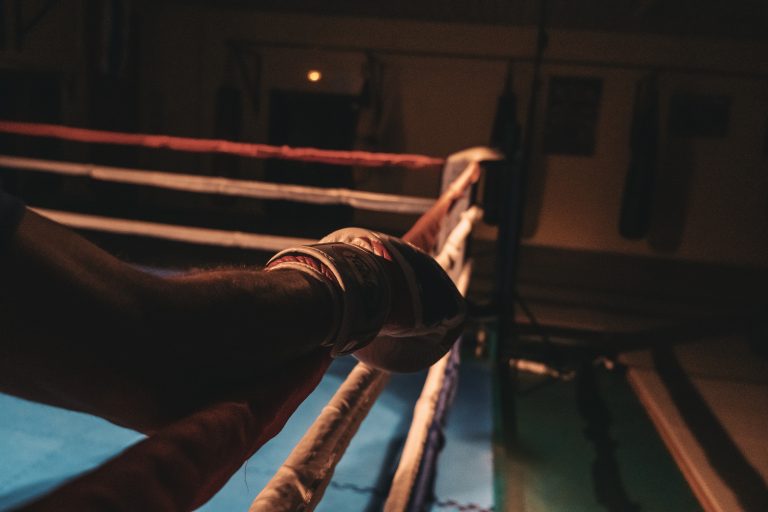Understanding the Levels of Karate Black Belt
Karate is a popular martial art form that originated in Okinawa, Japan. It is focused on self-defense techniques, consisting of various striking techniques such as kicks, punches, elbow strikes, and knee strikes. Karate emphasizes the use of both physical and mental strength to develop a person’s character, self-confidence, and discipline.
One of the most significant achievements in karate is reaching the level of a black belt. However, many people are unaware that black belts come in different levels, each representing a significant milestone in one’s karate journey. In this blog post, we will discuss the different levels of karate black belts and what they represent.
Dan System in Karate
Karate, like other martial arts, uses the Dan system to recognize the level of a practitioner. The Dan system originated in Japan and is a ranking system that represents a person’s level of mastery in martial arts. Dan is a Japanese word that means „step,“ and it refers to the steps taken towards mastery.
The Dan system for karate has ten levels, with a practitioner starting at the first level, known as Shodan. The tenth level, known as Judan, is the highest level achievable in Karate. With each new Dan level, a practitioner’s skills and knowledge are tested, and they are required to demonstrate their mastery of the art.
Different Levels of Karate Black Belt
1. Shodan
Shodan is the first level in the Dan system in karate. It is also known as the first-degree black belt. At this level, a practitioner has gained proficiency in the basic techniques and has developed an understanding of katas (a sequence of movements that simulate a fight).
To achieve Shodan, a practitioner must complete a range of requirements, including demonstrating their proficiency in basic techniques, performing katas, and sparring. The standard for Shodan differs depending on the karate organization, but one must typically train for at least three years to reach this level.
2. Nidan
Nidan is the second level in the Dan system in karate. It is also known as a second-degree black belt. At this level, a practitioner is expected to have a deeper understanding of the art, and their techniques should be more refined.
The requirements for Nidan are more rigorous than for Shodan. A practitioner must demonstrate proficiency in more advanced techniques, katas, and sparring. The minimum training period for this level is typically three years.
3. Sandan
Sandan is the third level in the Dan system in karate. It is also known as a third-degree black belt. At this level, a practitioner should be able to execute advanced techniques effortlessly and efficiently.
The requirements for Sandan are more demanding than for Nidan. A practitioner must demonstrate their proficiency in more complex katas and techniques, as well as show an understanding of the principles and philosophy of karate. The minimum training period for this level is typically four years.
4. Yondan
Yondan is the fourth level in the Dan system in karate. It is also known as a fourth-degree black belt. At this level, a practitioner should have attained an almost perfect mastery of the techniques.
The requirements for Yondan are more difficult than for Sandan, with the focus being on the application of the techniques and an understanding of the principles of the art. The minimum training period for this level is typically five years.
5. Godan
Godan is the fifth level in the Dan system in karate. It is also known as a fifth-degree black belt. At this level, a practitioner should be able to demonstrate an expert level of technique and skill.
The requirements for Godan are even more demanding, with a focus on teaching and passing on the knowledge base to the next generation of karate practitioners. The minimum training period for this level is typically six years.
Rokudan and beyond
Rokudan, or the sixth-degree black belt, and beyond are the highest levels achievable in karate. These levels require exceptional knowledge, skill, and proficiency in the art. These practitioners have dedicated decades of their lives to the practice of karate and have a profound understanding of the art’s philosophy and principles.
In
Levels of Karate Black Belt: Frequently Asked Questions
Introduction
Karate is an ancient martial art that originated in Okinawa, Japan. It is a highly disciplined and physically demanding art that requires years of practice and dedication. Karate has become popular all around the world, and the highest rank in karate is the black belt. There are different levels of black belts in karate, and there are many questions surrounding this topic. In this article, we will explore the most frequently asked questions about the levels of karate black belts.
What are the levels of karate black belts?
There are ten levels of karate black belts, each with a different degree of expertise. The levels are:
- Shodan – 1st Degree Black Belt
- Nidan – 2nd Degree Black Belt
- Sandan – 3rd Degree Black Belt
- Yondan – 4th Degree Black Belt
- Godan – 5th Degree Black Belt
- Rokudan – 6th Degree Black Belt
- Shichidan – 7th Degree Black Belt
- Hachidan – 8th Degree Black Belt
- Kudan – 9th Degree Black Belt
- Judan – 10th Degree Black Belt
What is the significance of the different levels of black belts in karate?
The different levels of black belts in karate indicate the level of proficiency that the practitioner has achieved in the art. Each level represents a significant milestone and requires a considerable amount of time and effort to achieve. The higher the level of black belt, the more advanced the training and techniques become. Achieving a higher level of black belt is a great accomplishment and a testament to the dedication and discipline of the practitioner.
How long does it take to achieve different levels of karate black belts?
The time it takes to achieve different levels of karate black belts varies depending on the individual’s experience, training frequency, and attitude towards the discipline. Typically, it takes around three to five years to achieve a first-degree black belt (Shodan) in karate. However, this can vary greatly depending on the individual’s dedication and commitment to the art. Achieving higher levels of black belts can take up to ten or more years of dedicated practice and training.
Do you have to start as a white belt to achieve a black belt in karate?
Yes, typically, one starts as a white belt in karate and progresses through the ranks, achieving the different levels of black belts. However, some schools may have different ranking systems, and students with previous experience in other martial arts may be allowed to progress through the ranks more quickly, depending on the school’s guidelines and the individual’s skill level.
What is required to achieve a black belt in karate?
Achieving a black belt in karate requires a great deal of discipline, dedication, and hard work. Typically, the requirements for achieving a black belt include mastery of fundamental techniques, kata (forms), kumite (sparring), and an understanding of karate philosophy and principles. Students also need to demonstrate proper etiquette and respect towards their dojo, their teacher, and their fellow students. Additionally, there may be specific requirements associated with each level of black belt that must be met before the student can progress further.
How to Achieve Different Levels of Karate Black Belt
Karate is an ancient martial art that has gained popularity worldwide for its self-defense techniques and health benefits. Karate players start their journey at the white belt level and progress through different levels of black belt. Advancing through the different levels of karate black belt requires dedication, hard work, and perseverance. Here is a step-by-step guide on how to achieve the different levels of karate black belt.
Step 1: Join a Karate School or Dojo
The first step to becoming a karate black belt is to find a reputable karate school or dojo. Do some research to find a school that meets your requirements. You can ask for recommendations from friends, check online reviews, and visit different schools to get a feel of the environment. Once you have found a school that you like, enroll in a beginner’s class.
Step 2: Start with a White Belt
All karate students start with a white belt, also known as ‚Mukyu.‘ A white belt signifies a beginner level and indicates that the student is a blank canvas, ready to learn the basics of karate. In the first few classes, you will be taught the proper etiquette, basic techniques, and katas of karate.
Step 3: Progress to Yellow, Orange, and Green Belts
After reaching a certain competency level at the white belt level, you will progress to the yellow belt, also known as ‚Ikkyu.‘ The yellow belt signifies that you have understood the basics of karate and have started mastering fundamental techniques. After the yellow belt, you will progress to the orange belt (‚Nikyu‘) and the green belt (‚Sankyu‘).
At the green belt level, you will start learning advanced techniques, katas, and sparring techniques. You will also start to learn about the philosophy of karate and its origins.
Step 4: Achieve Brown Belts
After the green belt, you will achieve the brown belt (‚1st Kyu‘) level, which indicates that you have mastered all the techniques, katas, and sparring techniques of karate. At this level, you will have to start training for the black belt, as the brown belt is considered a stepping stone to the black belt. You will have to display a high level of proficiency in all aspects of karate to achieve the brown belt.
Step 5: Achieve Black Belts
There are ten levels of karate black belt, ranging from ‚Shodan‘ (1st degree black belt) to ‚Judan‘ (10th degree black belt). To achieve a black belt, you will have to train for several years, display a high level of proficiency in all aspects of karate, and demonstrate the ability to use karate techniques in practical situations. You will also have to pass the Dan grading test, which is a rigorous test that tests your skills, mental fortitude, and character.
Conclusion
Achieving different levels of karate black belt requires years of hard work, dedication, and commitment. Joining a reputable karate school, starting at the white belt level, and gradually progressing through the different belts is the key to success. The journey to achieving a black belt is long and arduous, but the benefits are worth it. Karate provides physical and mental benefits, including stress relief, improved fitness, and self-confidence. Keep training, stay focused, and never give up on your journey to becoming a black belt.
Inhaltsverzeichnis






